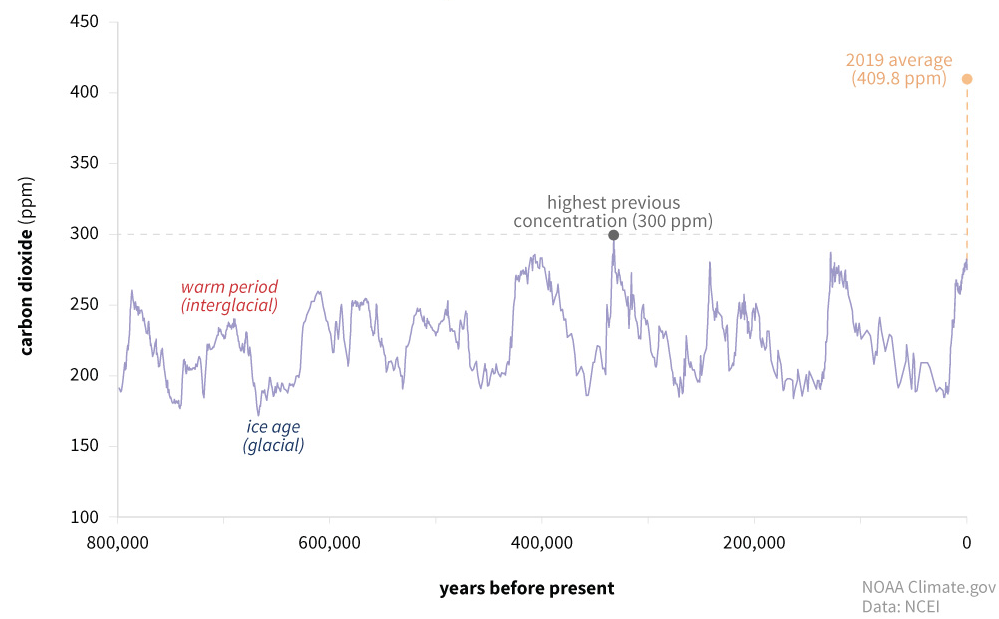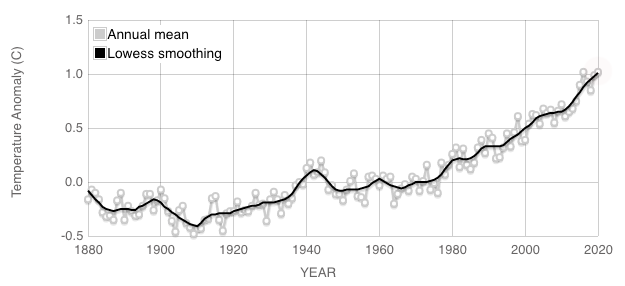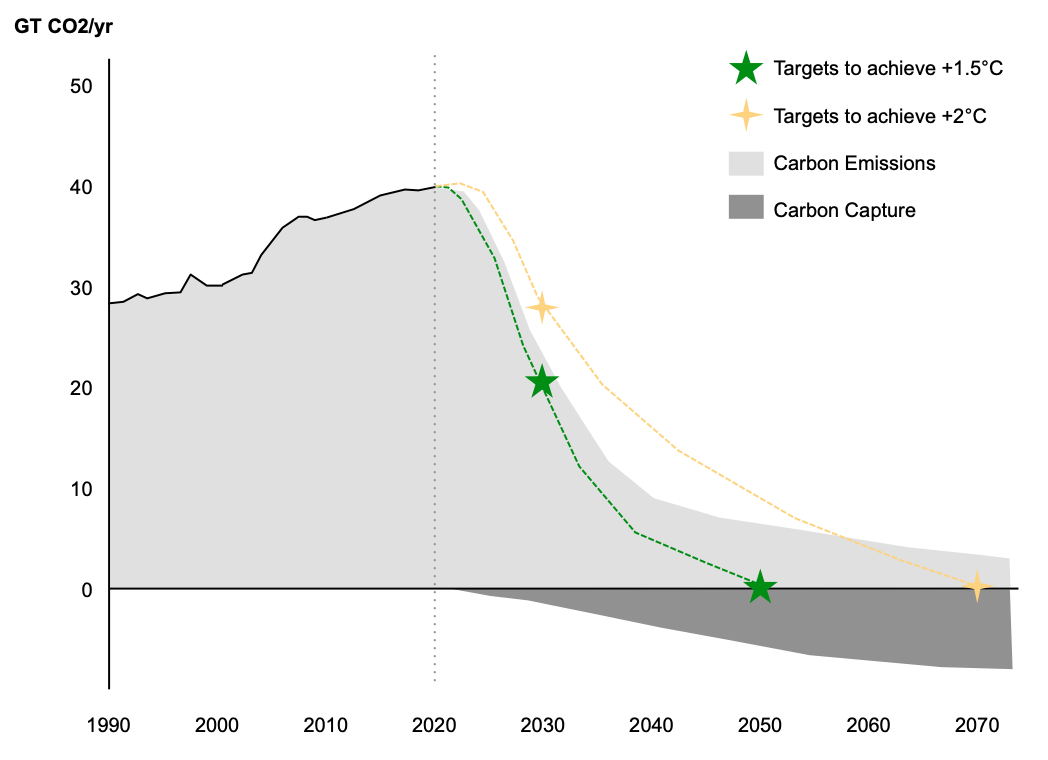I’ve been interested in energy and the environment since university as a mechanical engineering major during “Cleantech 1.0”. Since then I’ve done various things on the business or operations sides of different tech companies. More recently, the IPCC report “Global Warming of 1.5°C” and the resulting discourse helped refocus my attention on the climate problem. I decided to write and share online as I continuously learn, think, and do.
Most of my future content will be related to energy, but I felt the need to start with a simple post on the overarching challenge. The ultimate “why?”.
Read on for a basic introduction to the climate problem.
Our Modern Irony
Since the Industrial Revolution, humankind has experienced exponential economic growth and significant lifestyle advances. A lot of this progress is due to burning carbon-based fossil fuels - coal, oil, gas.
Fossil fuels have helped drastically reduce the distance between people, illuminated homes at night, powered refrigeration to keep food and medicine safe, driven mass production of goods, and much more.
Ironically, the carbon that has helped build our modern way of life also threatens our future through its lasting environmental impact.
The Greenhouse Effect
Combustion of carbon-based fuels increases the atmospheric concentration of carbon dioxide (CO2). The planet actually needs CO2 in the atmosphere for habitability. Our problem now is that there is too much.
Carbon dioxide and other greenhouse gases (GHGs) help regulate earth’s temperature through the greenhouse effect. As you know, life on earth is possible because of the sun. Solar energy from the sun passes through the atmosphere and is absorbed by the planet. The earth emits heat back in the direction of space.
GHGs absorb some of the heat radiating from the earth’s surface. They prevent excess heat loss to space and help maintain the planet in the right, habitable temperature range. A growing concentration of GHGs in the atmosphere would logically lead to trapping additional heat.
An Unnatural Imbalance
Carbon dioxide is emitted into the atmosphere as a result of natural phenomena including organic decomposition, respiration, and outgassing. Photosynthesis by plants takes carbon out of the air. This continuous carbon cycle regulates the overall amount of CO2. Recent human activity has drastically impacted this cycle, resulting in a greater accumulation of CO2 in the atmosphere.
CO2 accounts for 75%+ of human-caused emissions. From 800,000 years ago until the end of the 19th century, CO2’s concentration has cycled regularly within the range of 200 and 300 parts per million (ppm) molecules of air. Since the turn of the 20th century and with our increased reliance on burning fossil fuels, we’ve seen a hockey stick-shaped increase, with CO2 concentration now above 400ppm. We are putting more CO2 in the air at a pace faster than what natural emission sinks such as forests and oceans can remove.
CO2 Atmospheric Concentration over Time

Additionally, our land-use practices and industrial chemical processes have increased the concentration of other, more potent in their global warming potential, GHGs - methane (cyclical average of 500 parts per billion (ppb) to over 1750 ppb) and nitrous oxide (250 ppb to 300+ ppb). We have also introduced extremely potent fluorinated gases into the atmosphere as a result of refrigeration and air conditioning.
Alongside the spike in GHG concentration, we’re also witnessing consistently rising temperatures.
Global Land-Ocean Temperature Index

The post-industrial temperature anomaly is NOT part of the earth’s natural climate cycle: 1) previous warming and cooling periods were regional events while the current warming is global; 2) the faster paced temperature rise in recent decades is also abnormal.
Humans burn fossil fuels, causing CO2 concentrations to spike, driving global temperatures higher.
Climate Change Risks
The Intergovernmental Panel on Climate Change (IPCC) consisting of the world’s leading climate scientists state in the Special Report on Global Warming of 1.5°C:
“Human activities are estimated to have caused approximately 1.0°C of global warming above pre-industrial levels… Global warming is likely to reach 1.5°C between 2030 and 2052 if it continues to increase at the current rate.”
In this landmark report from October 2018, the IPCC lays out the risks of global warming and stresses the importance of limiting warming to +1.5°C (for which we’re currently not on track).
With the planet out of balance, extreme weather and permanent environmental change will fundamentally impact life. For example:
- Extreme temperatures will risk regional food supplies and increase demand for refrigerant-based air conditioning (which further adds to global warming)
- Increasingly frequent hurricanes and heavy precipitation will cause property damage, death, and disruption of supply chains
- Melting ice sheets drive rising sea levels and threaten the livability of coastal cities and existence of island nations, causing mass migration
- Land and sea habitat changes will impact biodiversity; fisheries will have smaller catches
This is not about being a climate alarmist. It is about risk management.
The science describes, with high confidence, that these types of events will occur with increasing frequency. They will have negative impacts on health, security, equality, and economies.
Instead of taking a short sighted approach that prioritizes keeping things as they are now, we can take an approach that reduces the mid and long term risks (to the planet and its people!) and in fact holds opportunity for economic gain and a more equitable future.
How do we mitigate the effects of climate change?
Mitigation
According to the IPCC models, to limit to +1.5°C, “global net anthropogenic CO2 emissions [would need to] decline by about 45% from 2010 levels by 2030, reaching net zero around 2050.”
Pathways to Limiting Global Warming

As you can see from the graph, this is a monumental task and a drastic change from the past.
Given the pace needed as well as barriers to fully decarbonizing certain emission sectors and countries, it’s well understood that we need a 2 pronged approach to achieve net zero emissions:
- Significantly reduce the amount of GHGs we put into the air going forward
- Take large amounts of CO2 out of the air
The climate change problem is massive & diverse in scope. It is a global, multidisciplinary challenge that will need the cooperation of governments, people of various fields, veterans and newcomers, new ways of thinking & doing, education, and a lot of investment. While this is all extremely daunting, I am excited by the opportunity for change and progress.